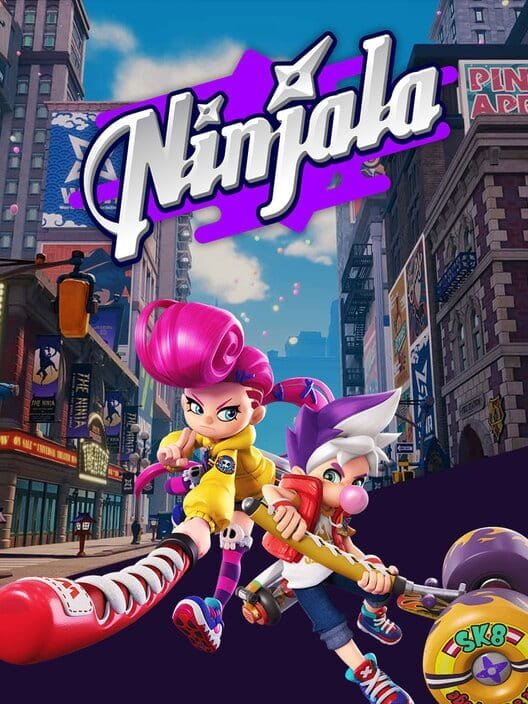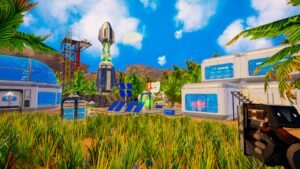I’ve mentioned before that I am, in fact, “CGM’s resident self-trained Ninja,” and as such, I make it my priority to keep an eye out for Ninja related games. Is it possible that I do it because I think Ninjas are really cool and I’ve loved them since I was a kid? Perhaps; but I like to think my years of hiding in bushes and trying to do backflips has given me a unique perspective in the ancient art of Ninjutsu.
Ninjala immediately caught my attention when it was announced during Nintendo’s March Mini Direct. I was intrigued by it’s interesting combat, sense of style, and it’s clear aesthetic influence from Splatoon. Having finally played it, I can say it’s a conflicting experience—there’s a lot to be desired; but, at the same time, I cannot stop playing it.
Ninjala is a bit of a mixed bag. As an online multiplayer game, it’s actually a lot of fun. Players can either jump into eight-player free-for-all battles, or four-on-four team matches, with the object of each game being to score K.O’s on their opponents for the most points. This comes in two flavors, your standard knockout, or a big IPPON knockout, where players—or enemies—are sent flying and pasted onto the nearest surface with gum.
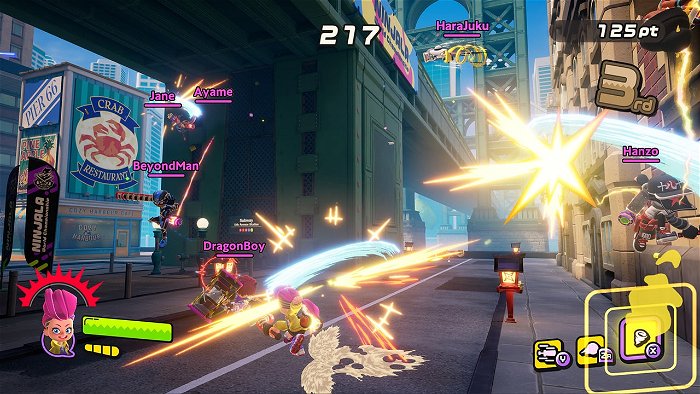
Combat is a strange blend of simplicity and chaos that I’m not totally sure how I feel about—even after countless games. Players are given three choices of weapon as of launch: a katana style bat, a big ol’ hammer, and a kasumi-kama style Yo-Yo. Each weapon type has four different variants that handle a bit differently and, like Splatoon, each come with different abilities and specials.
But every Ninja knows the value of defence as well as offence, and this is where combat can feel a bit frustrating. While players can use gum bubbles as a block—which can be broken by certain attacks causing players to get trapped in their own sticky hubris—the only other means of defence comes in a rock-paper-scissors style “clash” if two similar attacks connect. While this can make combat pretty tense, if it’s one-on-one; players aren’t given a lot of options for breaking out of combos, and when you’re attacked by multiple people, you’re basically guaranteed to get IPPON’d.
And while this can be frustrating, honestly, the basic mechanics of this combat focused game are so fun, it’s really hard not to get into it. Like Splatoon, players get back into the action very quickly so the momentum never feels broken when you’re K.O’d. This is coupled with a solid fluidity in movement, as running, jumping, dashing, and transitioning from the ground to running up any walls all feels great.
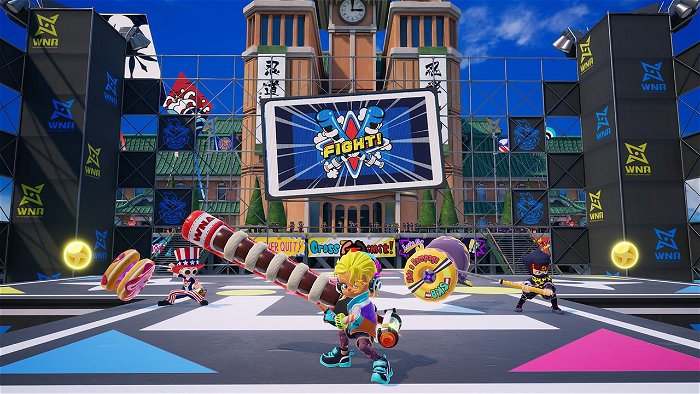
Also like Splatoon, Ninjala has a great sense of style, creating a world that looks like it’s run by kids constantly having fun—hey, imitation IS the most sincere form of flattery. Ninjala’s world is bright and colorful; with vibrant colors and cartoonish character designs. There’s a great focus on clothes and unique styles for each player to customize their character with.
And here’s where we come to the game’s biggest problem: the microtransactions. While it is free-to-play—so I’m inclined to be a bit more forgiving with Ninjala than I am other $60 to $90 games that cram microtransactions into their games—Ninjala has a microtransaction economy similar to that of Fortnite, or other battle royale games. Players can buy “Jala,” Ninjala’s premium currency; or purchase a season pass, and earn tiers which can reward more Jala, cosmetic items, or character emotes.
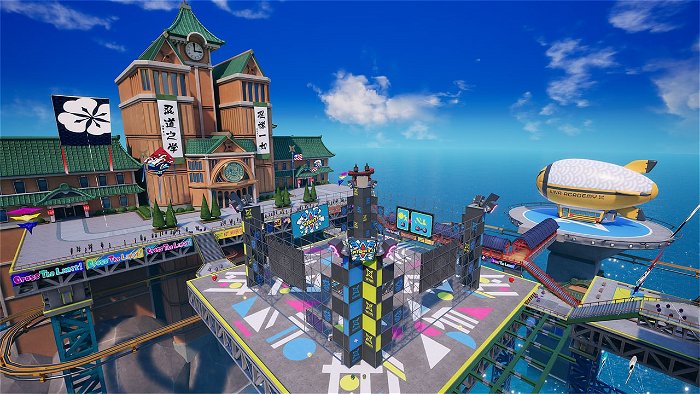
While it’s possible to earn these tiers without the Season Pass, as we know with games like Fortnite, progression rewards little to nothing. Furthermore, there’s a loot box style “Gumball Machine” where players can use either Jala, or medals they can earn in-game, to get cosmetic items or weapon skins—to it’s credit, it does the bare minimum of displaying item chance percentage. But to spend Jala on it would be stupid, and the amount of medals needed is so ludicrous, it’s basically unfeasible.
And I think this is the biggest problem with Ninjala. There’s a genuine lack of content: from the two arenas that available, to the limited weapon selection, to the single game mode; it all just feels compounded by the paid microtransactions, especially for cosmetic items in a game that—like Splatoon—is leaning hard into the idea of players dressing their avatars in cool clothes, going so far to even give detailed descriptions of the individual brands in loading screens.

And this is why I say Ninjala is a conflicting experience, because the good ideas it takes from Splatoon make it so genuinely fun, I honestly cannot stop playing it. While I think it is a genuinely good game, it definitely needs a BIG boost in content, and maybe a more balanced economy—particularly for a game that’s clearly targeted at kids.

